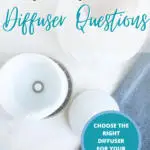How do oil diffusers work?
I remember being brand new to essential oils wondering what is all the fuss about these diffusers things. What does a diffuser do? and why do I want to invest in one?
If you want to enjoy the benefits of essential oils, the best way to do so is by diffusing them into the air. Oil diffusers provide incredible benefits for your body and mind through the therapeutic qualities of essential oils; they also add moisture to the air.
Now, are you like me, and have you ever asked yourself, “how do diffusers work?” In this post, we will look into different essential oil diffusers and find out what they do and how they work.
So, let’s dive in and find out the answer to the questions –
What does a diffuser do?
How do diffusers work?
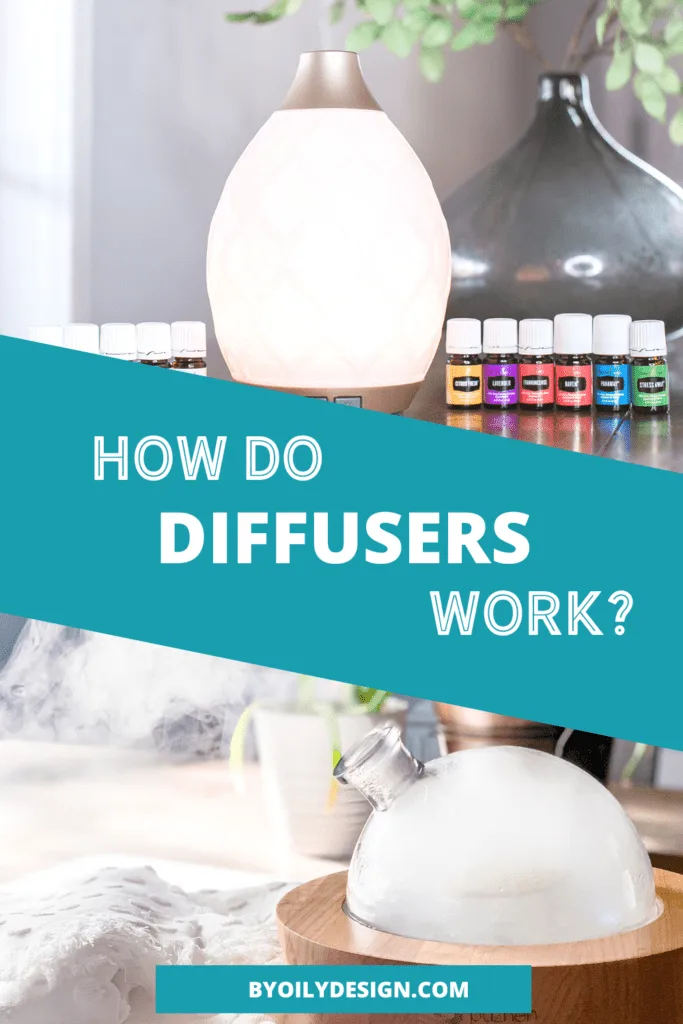
*This post contains affiliate links to the essential oils and other products I talk about in the post. Purchasing from the links here on my blog is no extra cost to you. As an Amazon Associate, I earn from qualifying purchases.
How do diffusers work?
Diffusers are small, powerful devices that work by diffusing essential oils into the air. When you inhale this air, you absorb the therapeutic qualities into your body. Depending on the essential oil used, breathing in the mist released by diffusers can help you relax after a stressful day, help support better sleep, and even keep you alert.
There are four different types of diffusers, and each of them uses a unique process to diffuse essential oils into the air. These include –
1. Ultrasonic diffusers
2. Nebulizing diffusers
3. Heat diffusers
4. Evaporative diffusers
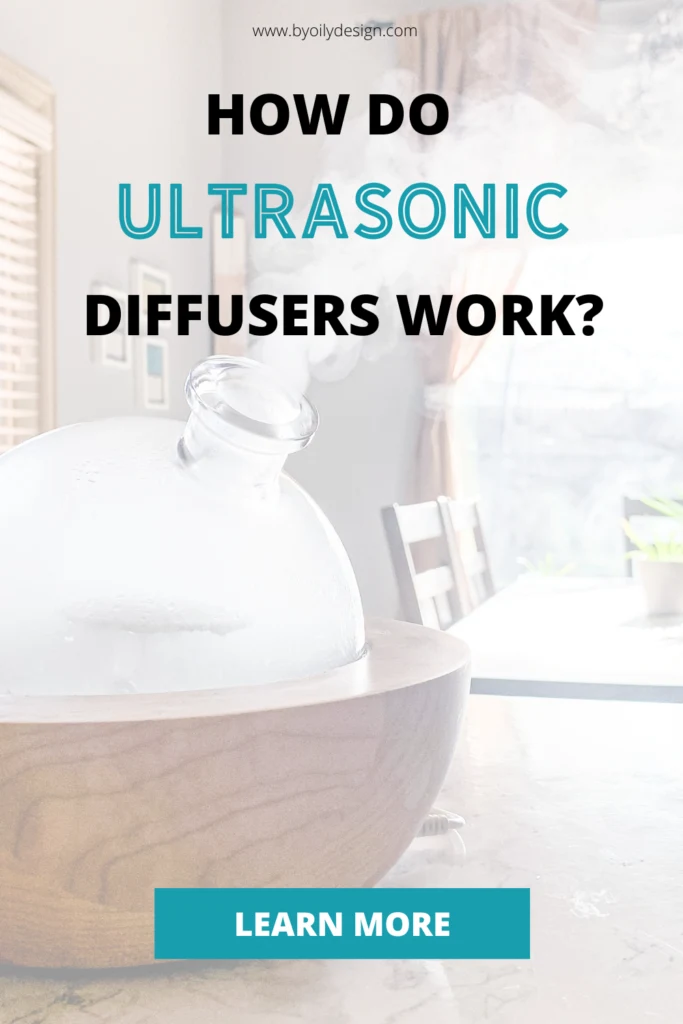
How do ultrasonic diffusers work?
An ultrasonic diffuser creates a mist with water and essential oil and disperses it into the air. The science behind ultrasonic diffusers is pretty simple.
Every ultrasonic diffuser has a small ceramic disc. When the diffuser is turned on, this ceramic disc produces ultrasonic vibrations. These ultrasonic vibrations are actually sound waves that have an ultrasonic frequency that we can't hear.
The ultrasonic waves churn the water and essential oils in the diffuser reservoir at such a high rate that they turn into fine particles that we see as a cool mist and disperse into the air.
The essential oil mixed in the water is trapped inside the water droplets and dispersed into the air.
Usually, turning water into water vapor requires heat. Here's where an ultrasonic diffuser and how it works are different. These diffusers achieve the same result through an adiabatic process – a term used for producing mist without using heat.
Essential oil misters offer numerous mental and physical health benefits. Choosing the right essential oil products and using them appropriately in your water diffuser will ensure that you have the best aromatherapy experience.
What does a diffuser do to support your health?
People also wonder, how does a water diffuser work to improve your health? Diffusers that use water like the ultrasonic essential oil diffuser can also be used as makeshift humidifiers. An added benefit of water diffusers is that they can be a great help if you have dried-out airways.
The total number of drops of essential oil you will use to run an ultrasonic diffuser will be based on the water tank size of the diffuser, room size and who is in the room. Ultrasonic models come in a wide range of sizes and shapes to fit a small room such as a bedroom to large spaces like an open concept kitchen.
Essential oil diffusion can be scary for the first time you try it so check out our extensive guide on how to diffuse essential oils the right way. Once you get use to diffusing essential oils you can really have fun with them like creating amazing Fall diffuser scents to make your home smell amazing.
How do heat diffusers work?
A heat diffuser works by heating essential oils till they evaporate. All they need is a tiny candle to do the job. The candle heats the reservoir of oil from below. As the oil heats, it evaporates into the air. You may also be wondering how do ceramic diffusers work? A ceramic diffuser is a type of heat diffuser, and it works on the same principle.
Though heat diffusers like ceramic diffusers, lamp room diffusers, and electric heat diffusers are a more economical option, you cannot control the strength and the duration of these diffusers. There is also evidence that heating essential oils can change the chemical composition of the oil therefore changing its therapeutic uses.
These diffusers are not appropriate for use in homes with pets and small kids.
Personally, I have always avoided candle heat diffusers as various essential oils are known to be flammable and the idea of using them around open flames makes me nervous.
How do evaporative diffusers work?
There are two types of evaporative diffusers – active and passive.
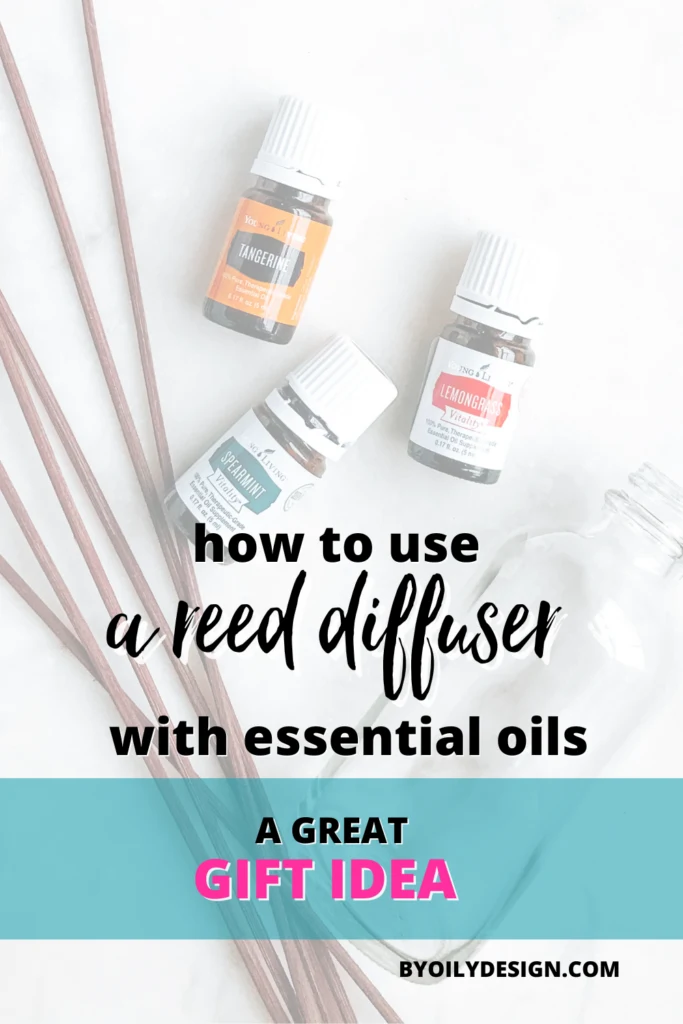
Passive evaporation
Have you ever wondered how do reed diffusers work? Reed diffusers are the perfect example of a passive evaporation diffuser. Reed diffusers have three main parts – the reeds, a glass bottle, and the essential oil.
The reeds contain microscopic channels that absorb the essential oil from the container and push it to the top of the reed through capillary action. Once the oil reaches the tip of the reed, it evaporates into the air.
Passive diffusers do work but their scent is very light and usually take a large number of drops of oil to work. This would be a great option for personal diffusers in say a small office space or tiny bathroom.
Active evaporation
An active evaporative diffuser has a small fan that blows air across the surface of a small absorbent pad containing essential oil. This causes the oil molecules to evaporate into the air.
You don’t need to use any water in active evaporation diffusers.
Pro tip- I like to take a small cotton ball. Apply a few drops of lavender oil or one of my favorite citrus oils and place them near air vents. This gives off the perfect light scent for small spaces such as closets and bathrooms.
How do nebulizing diffusers work?
Nebulizer diffusers do not require any water to work. These diffusers work through a scientific principle called Bernoulli's Principle.
The air is passed through a small tube at high speed in these diffusers. This process also produces a difference in pressure in the tube. The pressure near the exit is lower. This pressure creates a suction effect, causing the essential oils to be sucked up to the top of the tube.
The rising essential oils and pressurized air atomize the essential oil molecules into tiny particles, which are then diffused throughout the room.
Some FAQs regarding essential oil diffusers
If you have recently bought an oil diffuser, there may be many questions in your mind about how they work and the science behind the technology. Here are the answers to some commonly asked questions about how do aromatherapy diffusers work –
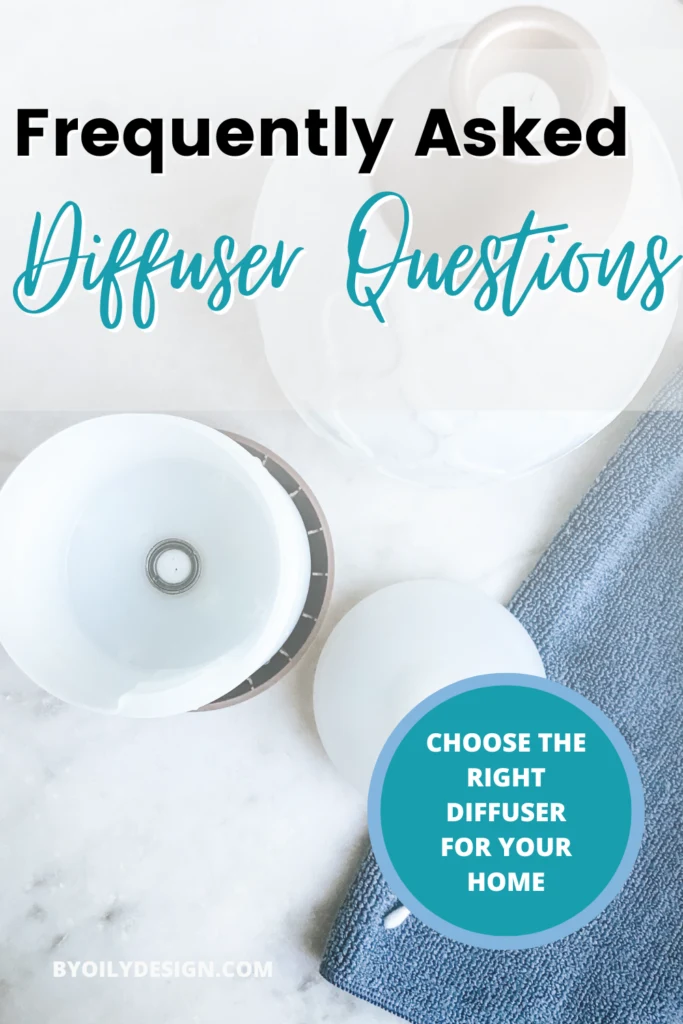
1. How do diffusers make steam?
Ultrasonic diffusers have a water reservoir that you fill with water before use. To this water, you have to add essential oils of your choice. The sound waves produced by the ceramic plate in the diffuser separate the water particles and turn them into a mist. This is the steam that you see escaping from your diffuser. This mist is actually cold steam.
2. What does a diffuser do in your room?
When you use an oil diffuser, it fills your room with tiny, breathable particles of beneficial essential oils. This helps to provide your space with a calmer and more pleasant-smelling ambiance.
3. Does an ultrasonic diffuser use heat?
Ultrasonic diffusers do not use heat. The process of an ultrasonic diffuser is adiabatic, which means the oil changes states without heat. During this process, the oil is not broken down. Making it so you can enjoy the full benefits of essential oils.
4. What kind of water should you use in a diffuser?
Once you have understood how does an oil diffuser work, you must ensure that you use the right kind of water to ensure that it runs smoothly. You must use tap water in your ultrasonic diffuser because the tap water's natural minerals help the water diffuse into a vapor better than distilled water.
Final notes
Diffusers are an excellent way to bring the healing benefits of essential oils into your life. Once you have understood how do essential oil diffusers work, you can choose which type of diffuser is the best for you.
If you are looking for an oil diffuser for your bedroom, an ultrasonic diffuser would be a great choice. A nebulizing diffuser is a good choice if you are looking for a powerful diffuser for a larger space. If you need a diffuser for your car or your desk at the office, an evaporative diffuser is the best choice. If you are looking for a diffuser that looks good and provides all-natural aromatherapy, a ceramic heat diffuser may be a good choice.
Now that you know the answer to how different types of essential oil diffusers work, it's time to buy one for your home. Remember that no matter which type of diffuser you pick the therapeutic effects are only as good as the quality of your essential oils. My favorite oils are Young Living and I would love to help you get started using the best essential oil diffusers and Young Living's pure essential oils.


